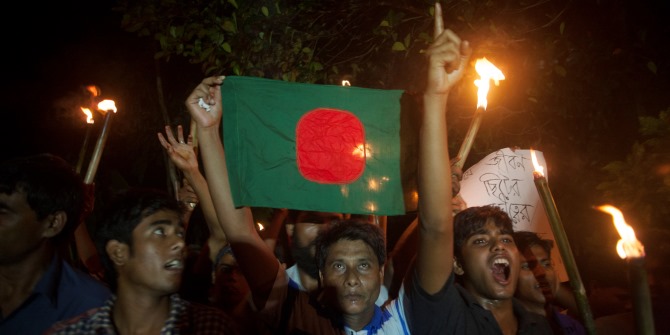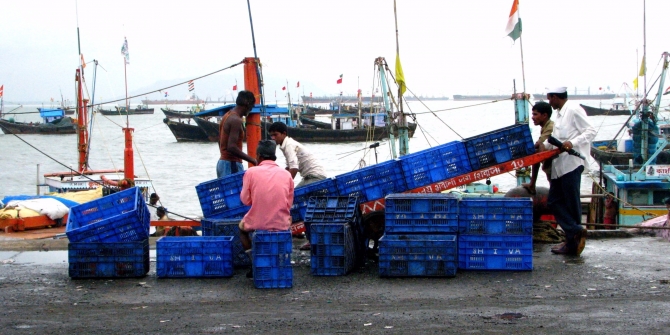In recent times, the growing economic relationship between India and African countries has been the subject of academic research and newspaper articles. Yet, as this collection of images courtesy of the New York Public Library shows, the relationship between these entities has existed for centuries. This post is part of a two-week-long series on India-Africa relations.
 Zanjis Fighting: This miniature painting in India comes from the Persian story of Darab fighting the Zanjis (Africans). [Mughal, India, c. 1580-1585. Abu Tahir Tarasusi, Darabname Or. 4615, f. 29b. British Library.]
Zanjis Fighting: This miniature painting in India comes from the Persian story of Darab fighting the Zanjis (Africans). [Mughal, India, c. 1580-1585. Abu Tahir Tarasusi, Darabname Or. 4615, f. 29b. British Library.]
 Malik Ambar: Malik Ambar (1549-1626), born in Harar, Ethiopia, was sold as a child into slavery and became one of the most celebrated rulers in the Deccan region of India. [Artist: Unknown, c. 1620. Watercolor on paper. Victoria and Albert Museum.]
Malik Ambar: Malik Ambar (1549-1626), born in Harar, Ethiopia, was sold as a child into slavery and became one of the most celebrated rulers in the Deccan region of India. [Artist: Unknown, c. 1620. Watercolor on paper. Victoria and Albert Museum.]
African Muslim Theologians: Shah Jahan, ruler of the Mughal Empire between 1628 and 1658 — and builder of the famous Taj-Mahal — honours Muslim learned men, including two Africans [Artist: Murad. Freer Gallery of Art, Smithsonian Institution, Washington, D.C.: Purchase, F1942. 17a – 18a]
Porters at a Wedding Procession: In the eighteenth century, Africans from the East Coast and Madagascar were transported to the Makran coast in Pakistan, and to Gujarat (India). Some were then sent to serve Indian and European elites in the north and east as far away as Bengal. [Picture Collection, Mid-Manhattan Library, The New York Public Library.]
 Indian Musicians, Early 1800s: Adult men were the most in demand in India. They were barbers, musicians, field labourers, water carriers, guards, soldiers and sailors. By the 1820s, preference shifted toward boys—who were more easily controlled than adults—and women for domestic work and as concubines and prostitutes. The slave trade to India was organised at different times by the Arabs, the Portuguese, the British and the Indians. [Picture Collection, Mid-Manhattan Library, The New York Public Library.]
Indian Musicians, Early 1800s: Adult men were the most in demand in India. They were barbers, musicians, field labourers, water carriers, guards, soldiers and sailors. By the 1820s, preference shifted toward boys—who were more easily controlled than adults—and women for domestic work and as concubines and prostitutes. The slave trade to India was organised at different times by the Arabs, the Portuguese, the British and the Indians. [Picture Collection, Mid-Manhattan Library, The New York Public Library.]
Blowing up a Slave Dhow in the Arabian Gulf, 1868: In 1863 and 1864, a total of 2,179 Africans were freed from slave ships in the Indian Ocean. Most were settled in the Seychelles, while others were sent to Bombay (Mumbai), India, and Aden, Yemen. [Picture Collection, Mid-Manhattan Library, The New York Public Library.]
For more images and information, see The African Diaspora in the Indian Ocean World, an online exhibition by the New York Public Library and the Schomburg Center for Research in Black Culture.










